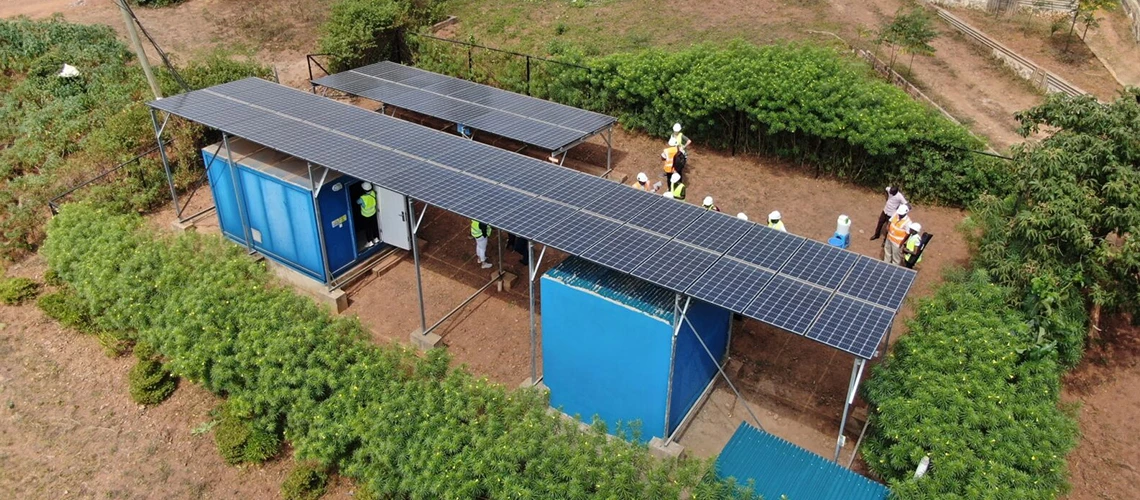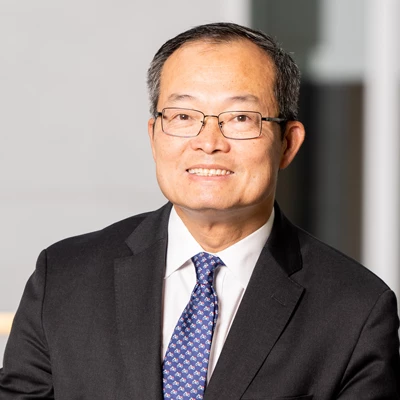
More than 90% of the world has access to electricity. While that number is impressive – it has grown from 84% in 2010 – it also means that 685 million people still live without electricity. Most of these people, about 80% of them, are in Sub-Saharan Africa.
For decades, governments and development partners have supported grid deployment with the ultimate objective of bringing electric pylons and lines to every village. In recent years however, a crucial mindset and technology shift has taken place: there are other ways to bring electricity to the last mile. Thanks to technological breakthroughs, digitization, and innovations in payment models, Distributed Renewable Energy (DRE) has the potential to become one of the least-cost and most efficient ways to bring electricity to the remaining unconnected communities.
The DRE Revolution
DRE typically consists of installing solar panels, in small or bigger quantities, and aggregating them with battery storage. DRE systems are nimble, financially accessible, resilient, and provide the same quality electricity as the grid. In certain conditions, DRE are already showing potential to be cheaper than traditional diesel-powered systems. For example, in Uttar Pradesh, India, GEAPP’s deployment of a standalone rooftop solar system reduced energy costs for micro, small and medium enterprises from $0.17/kWh using the existing diesel system to as low as $0.04/kWh—enabling a local grain mill to double its volume of wheat.
Low- and middle-income countries have a unique opportunity to leapfrog the traditional centralized model and transition to a more distributed approach to electrification, particularly in regions that are not currently electrified, such as remote island or other underserved areas.
Innovative Partnerships
While DRE is revolutionizing energy access across the world, time is limited to reach universal access by 2030, as pledged in the Sustainable Development Goal 7 (SDG7). The depth of the challenge requires faster and more coordinated action on an exponential scale.
To this avail, in November 2022, the World Bank Group announced at COP27 the Distributed Access through Renewable Energy Scale-Up (DARES) program which aims to enable mega-projects with pledges from the World Bank Group and partners, like the Global Energy Alliance for People and Planet (GEAPP). DARES focuses on three areas: mini grids, off-grid solar markets, and solar systems for schools and health facilities. On the DARES platform, the Accelerating Sustainable and Clean Energy Access Transformation (ASCENT) program was recently launched, a multi-partner, multi-year, multi-billion-dollar program aimed at providing life-transforming opportunities for 100 million people across 20 countries in Eastern and Southern Africa.
Likewise, GEAPP committed over $250 million to DRE globally and is doubling down with partners and programs like DARES to drive down the cost of DREs even further and accelerate the flow of funds to DREs to speed energy access and transition. At the heart of GEAPP is an Alliance that believes in the transformational power of DRE to build the energy system of the future.
Comprehensive Electrification Plans
The deployment of DRE can be accelerated through the development of least-cost electrification strategies. The World Bank’s ESMAP has helped a number of countries use geospatial data to identify the best electrification technologies—off-grid, mini grid, or grid extension—based on population density and income levels. ESMAP has created realistic and cost-effective scenarios to provide a roadmap of how countries can achieve universal access to electricity by 2030.
Through detailed regional studies like the one supported by GEAPP in Kenya, it was found that by adopting a blend of grid and DRE solutions, electrification rates could have been 10% higher over the past 25 years for the same amount of investment. In India, GEAPP’s Detailed Energy Survey toolkit developed under Smart Power India is already being used by leading developers in India like Tata Power Renewable Micro Grid and Hamara Grid to select suitable mini-grid sites as well as design specifications of their mini-grid technology.
Bridging the Funding Gap
Finally, DRE requires public funding to overcome the gap between the cost of reaching remote and difficult areas and the affordability level of the clients in these regions. While national grids have always been subsidized, until recently, DRE was viewed as a purely private sector endeavor beyond the scope of public funding. However, governments and development partners are now recognizing the need to support DRE and are developing comprehensive support packages that include subsidies to attract private investment.
A component of DARES is to explore and develop innovative financial solutions to
- mobilize patient, private capital;
- facilitate viability gap funding, results-based financing, and small but catalytic grants for companies;
- and aggregate climate benefits at the regional level to mobilize climate/impact financing.
These subsidies to DRE are mostly in the shape of results-based finance, where financing is provided based on the number of connections made.
Catalytic finance, like the philanthropic capital provided by GEAPP, has a vital role to play. These flexible, risk-tolerant funds complement the larger public funds by creating proof points, honing the business case for DRE, supporting governments, and building the international coalitions to drive adoption.
Learn more about the urgency of electrifying Africa and the DRE revolution by watching the recording of the World Bank/IMF Spring Meetings event, “Energizing Africa: What Will it Take to Accelerate Access & Improve Lives”.
Subscribe here to stay up to date with the latest Energy blogs.



Join the Conversation